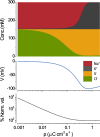Correction: Evolution of our understanding of cell volume regulation by the pump-leak mechanism
- PMID: 30842220
- PMCID: PMC6445589
- DOI: 10.1085/jgp.20181227402282019c
Correction: Evolution of our understanding of cell volume regulation by the pump-leak mechanism
Figures


Erratum for
-
Evolution of our understanding of cell volume regulation by the pump-leak mechanism.J Gen Physiol. 2019 Apr 1;151(4):407-416. doi: 10.1085/jgp.201812274. Epub 2019 Feb 19. J Gen Physiol. 2019. PMID: 30782603 Free PMC article. Review.
Publication types
LinkOut - more resources
Full Text Sources

